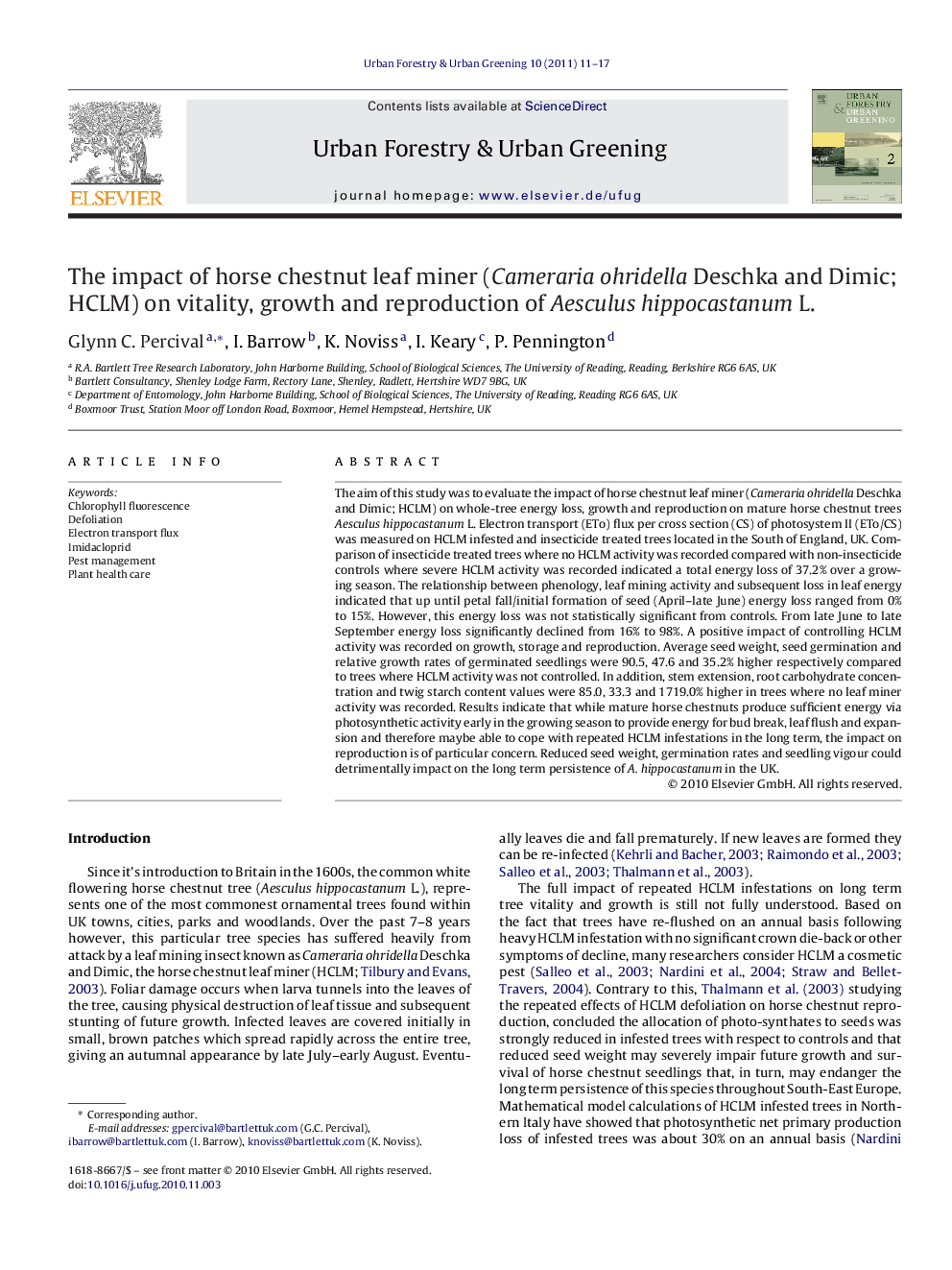| کد مقاله | کد نشریه | سال انتشار | مقاله انگلیسی | نسخه تمام متن |
|---|---|---|---|---|
| 94333 | 160275 | 2011 | 7 صفحه PDF | دانلود رایگان |

The aim of this study was to evaluate the impact of horse chestnut leaf miner (Cameraria ohridella Deschka and Dimic; HCLM) on whole-tree energy loss, growth and reproduction on mature horse chestnut trees Aesculus hippocastanum L. Electron transport (ETo) flux per cross section (CS) of photosystem II (ETo/CS) was measured on HCLM infested and insecticide treated trees located in the South of England, UK. Comparison of insecticide treated trees where no HCLM activity was recorded compared with non-insecticide controls where severe HCLM activity was recorded indicated a total energy loss of 37.2% over a growing season. The relationship between phenology, leaf mining activity and subsequent loss in leaf energy indicated that up until petal fall/initial formation of seed (April–late June) energy loss ranged from 0% to 15%. However, this energy loss was not statistically significant from controls. From late June to late September energy loss significantly declined from 16% to 98%. A positive impact of controlling HCLM activity was recorded on growth, storage and reproduction. Average seed weight, seed germination and relative growth rates of germinated seedlings were 90.5, 47.6 and 35.2% higher respectively compared to trees where HCLM activity was not controlled. In addition, stem extension, root carbohydrate concentration and twig starch content values were 85.0, 33.3 and 1719.0% higher in trees where no leaf miner activity was recorded. Results indicate that while mature horse chestnuts produce sufficient energy via photosynthetic activity early in the growing season to provide energy for bud break, leaf flush and expansion and therefore maybe able to cope with repeated HCLM infestations in the long term, the impact on reproduction is of particular concern. Reduced seed weight, germination rates and seedling vigour could detrimentally impact on the long term persistence of A. hippocastanum in the UK.
Journal: Urban Forestry & Urban Greening - Volume 10, Issue 1, 2011, Pages 11–17